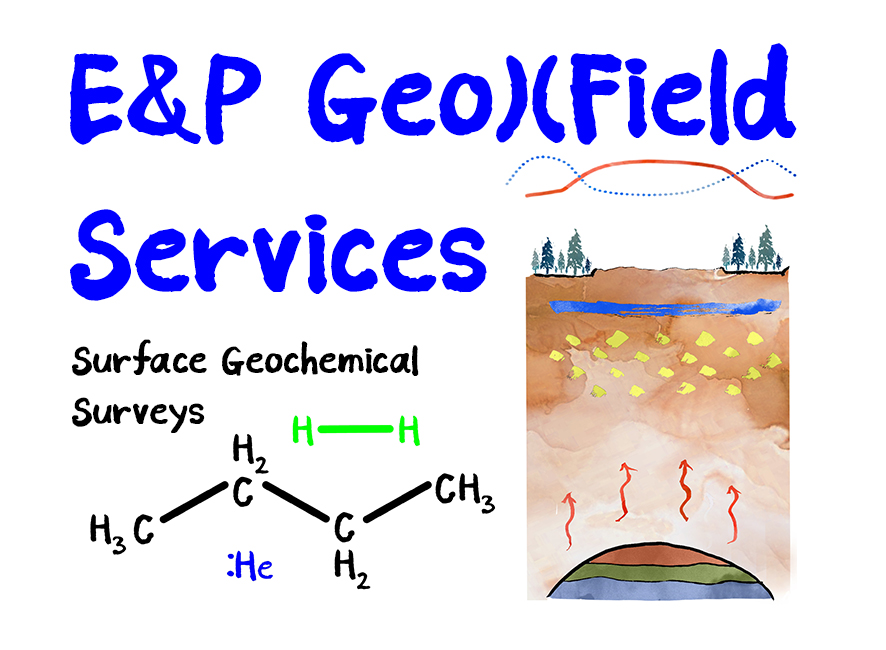E&P GeoFS’s Geochemical Techniques
Since different soils and seabed environments affect in various ways how efficient Surface Hydrocarbon Detection Methods could be, we had developed a set of analytical and sampling techniques for different environments and exploration/developing objectives.
We are the only scientific researching company that had grouped these different hydrocarbon detection tools and provide them to the Oil and Gas industry.
The hydrocarbon detection methods that E&P Geo Field Services can provide for Onshore and Offshore Surveys include the following:
Onshore: From Shallow Surface Sediments (Soil/Sand/Clays) – Offshore: From Core Sediments.
Microbial: butane-utilizing microbes; integrative; identifies significant microseepage anomalies over widest range of environments, quantitative and qualitative. – Onshore & Offshore.
Soil Gas Hydrocarbons: C1 to C5; instantaneous or integrative; interstitial or acid-extracted, quantitative and qualitative. – Onshore & Offshore.
Solid Phase Microextraction (SPME) C4 to C20+; quantitative and qualitative, identifies gasoline range hydrocarbons. – Onshore & Offshore.
Passive Soil Vapor: C2 to C20+; integrative; uses in-ground samplers; 2 – 3 weeks residence time, qualitative. – Onshore & Offshore.
Fluorescence: 2-ring and 3-ring aromatics; a reliable liquid hydrocarbon indicator, quantitative and qualitative. – Onshore & Offshore.
Hydrocarbon Seep Analysis: light and heavy hydrocarbons; GC, GCMS, biomarkers, Isotopic composition, and more. – Onshore & Offshore.
Hydrocarbon TRACE Analysis: light and heavy hydrocarbons; GC, GCMS, biomarkers, Isotopic composition, and more, – Onshore & Offshore.
